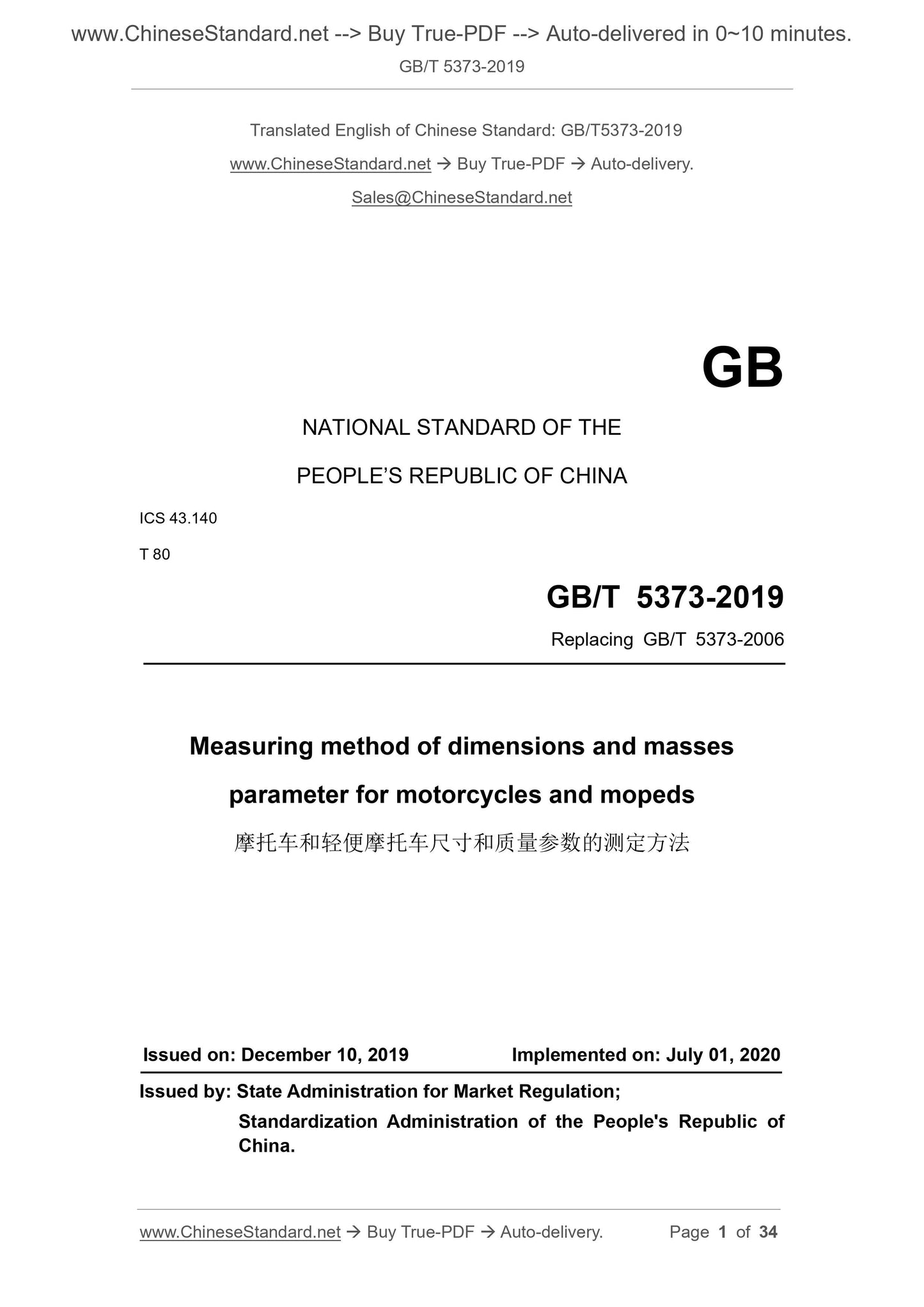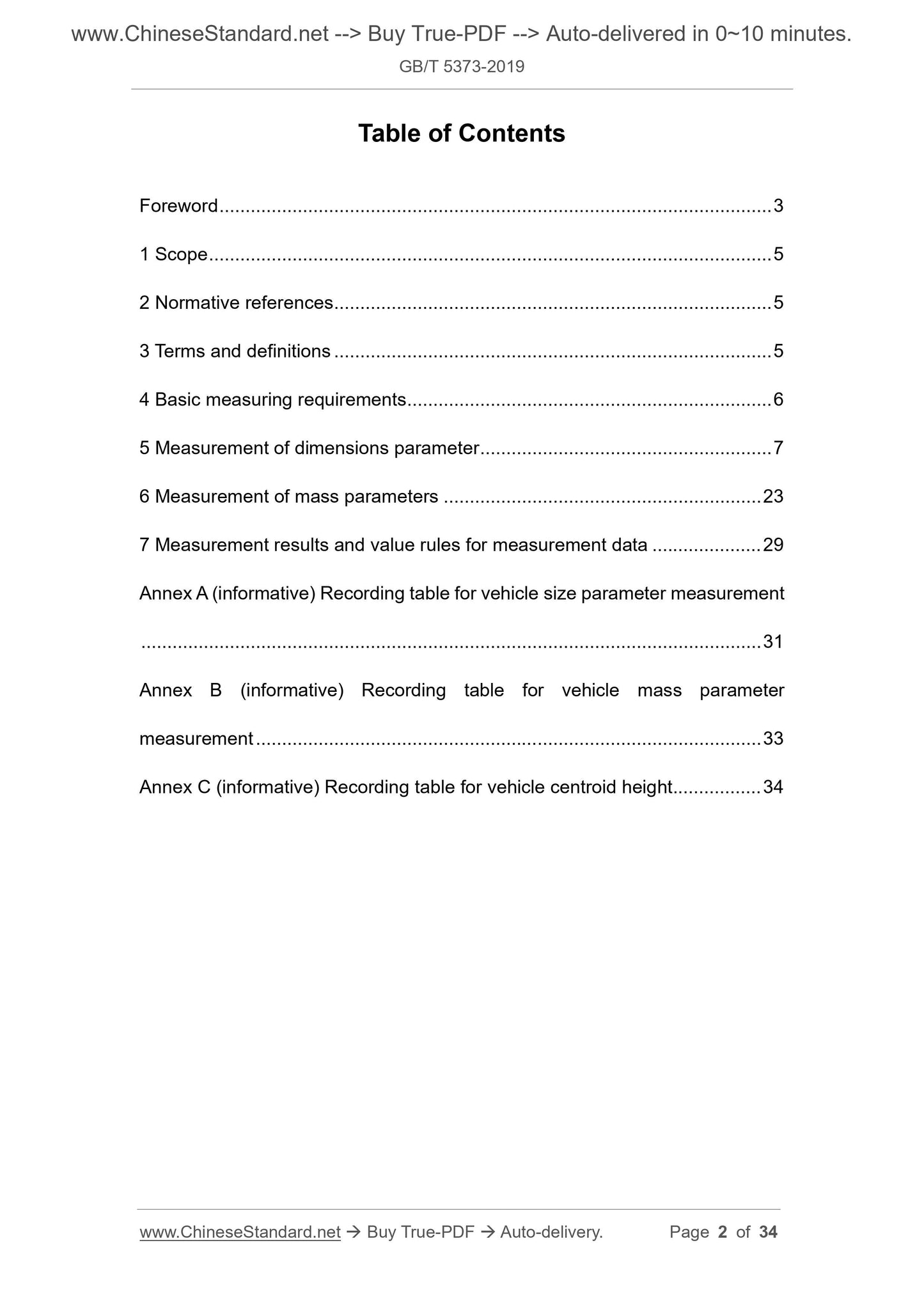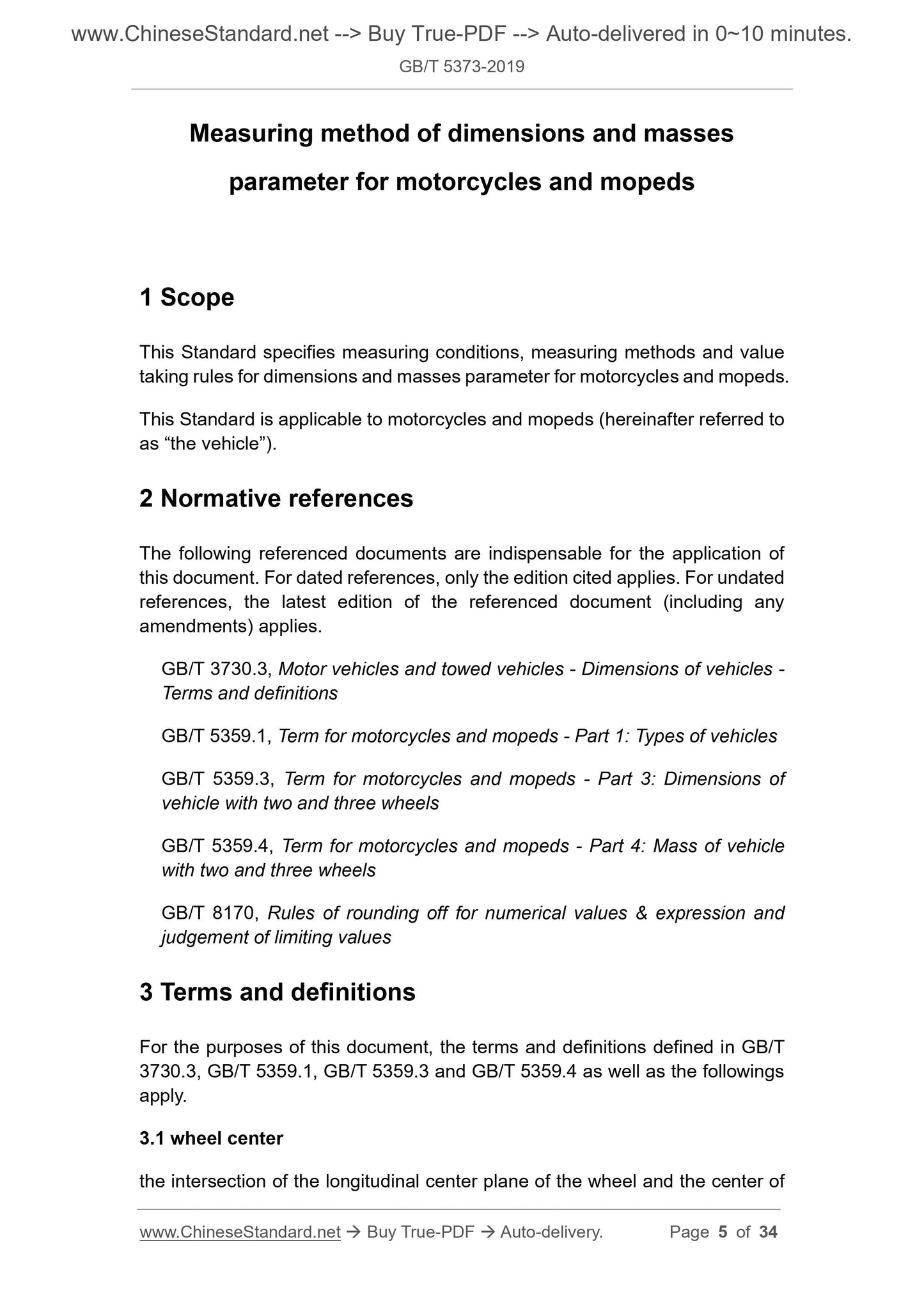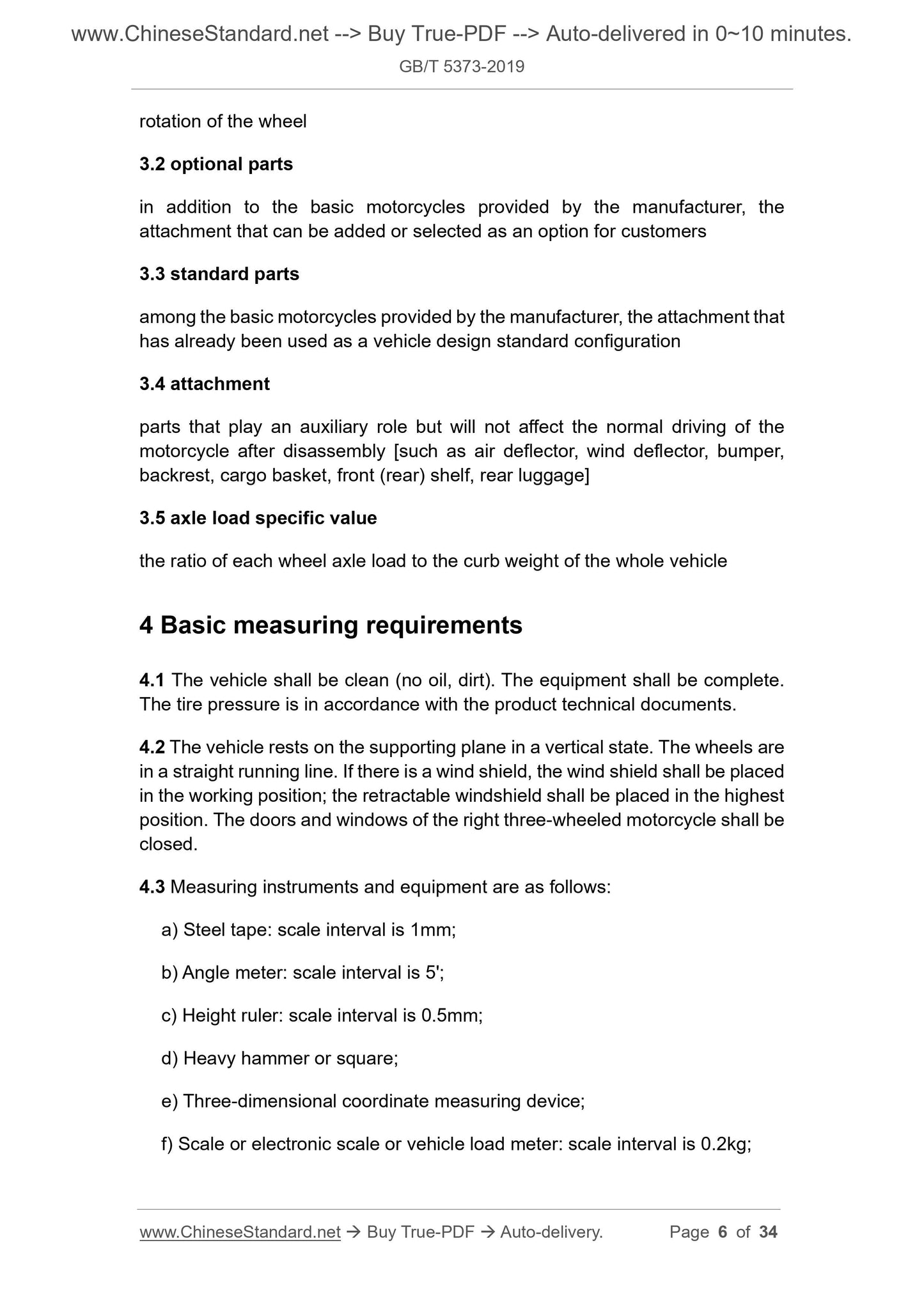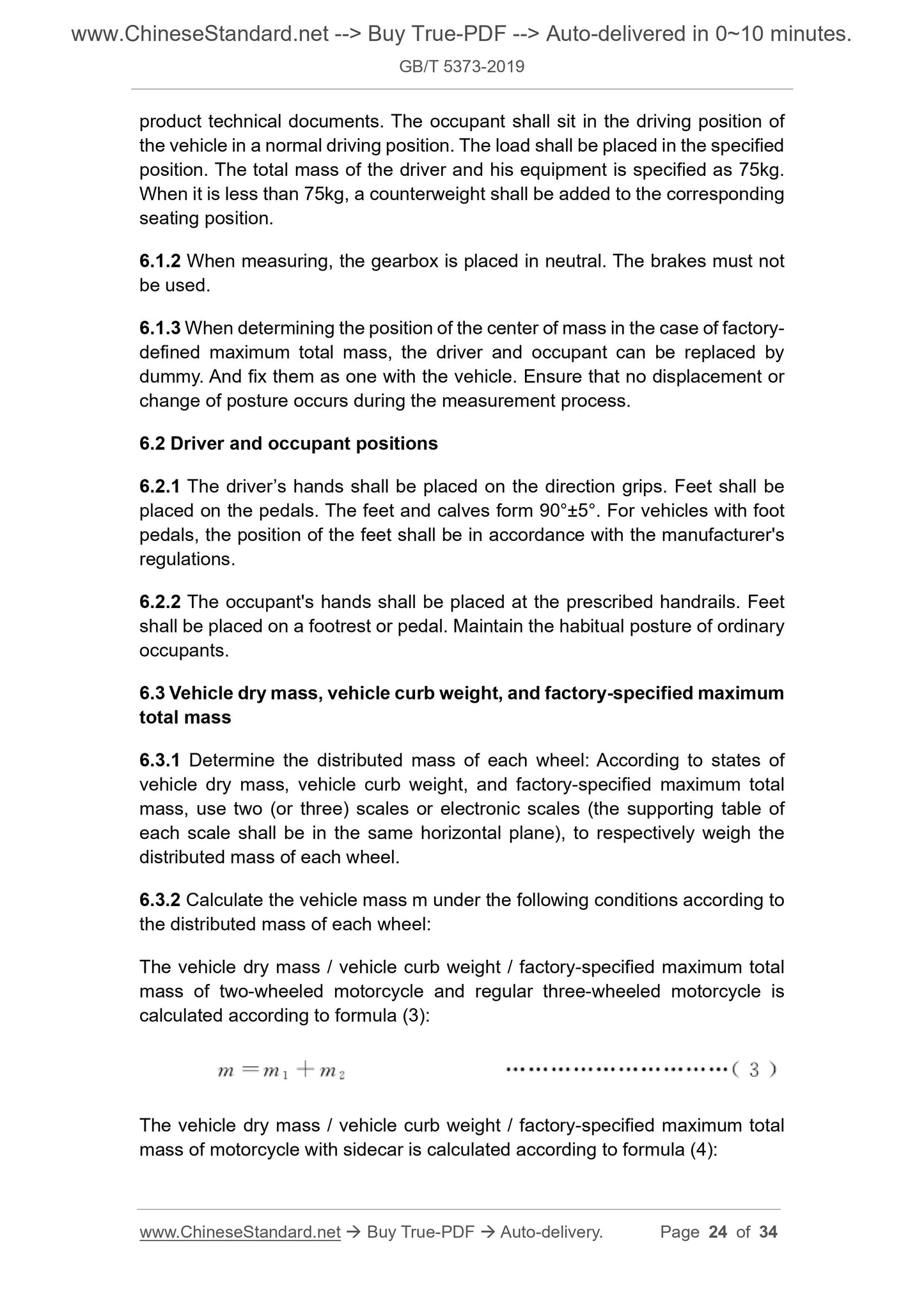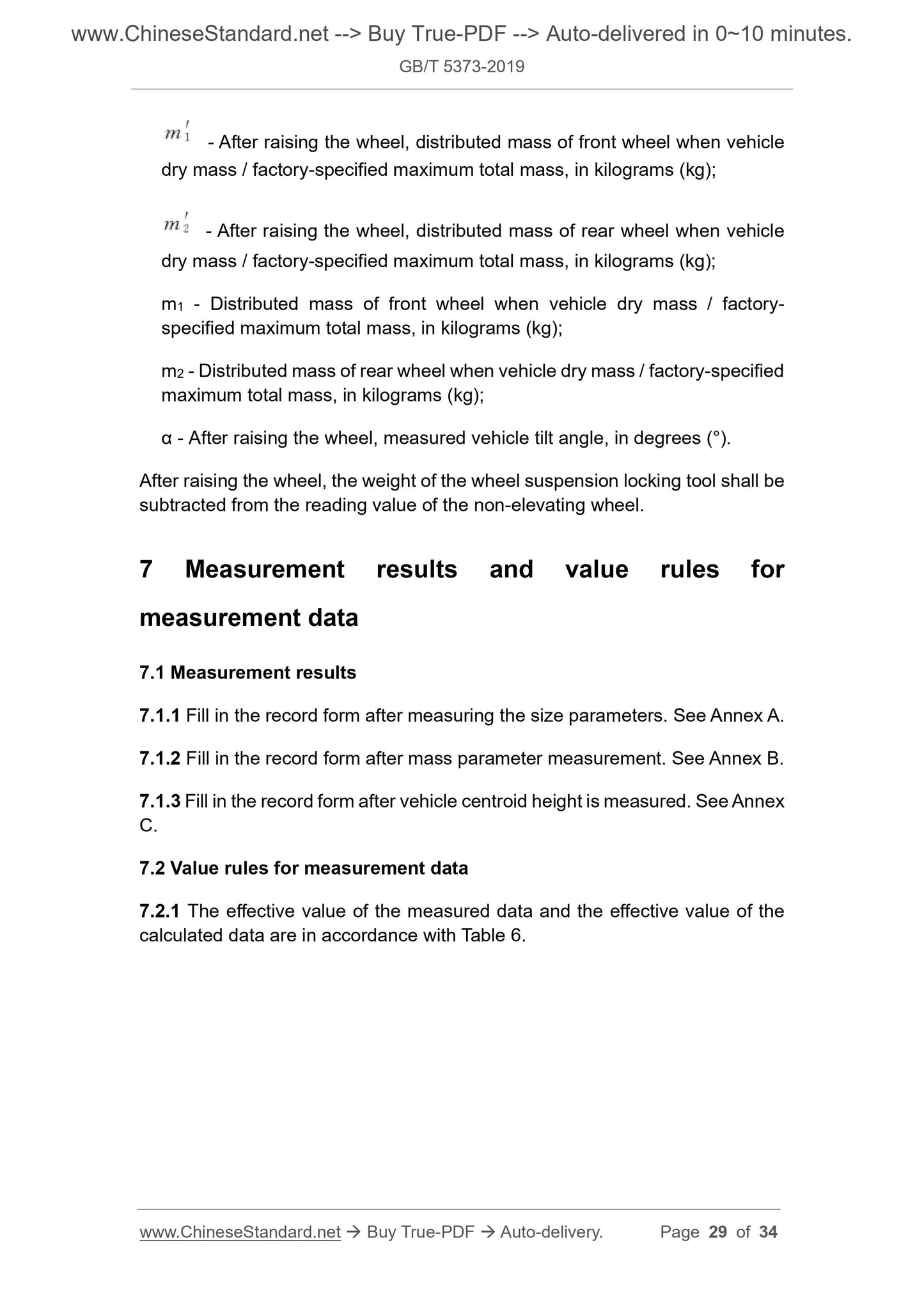1
/
of
6
www.ChineseStandard.us -- Field Test Asia Pte. Ltd.
GB/T 5373-2019 English PDF (GB/T5373-2019)
GB/T 5373-2019 English PDF (GB/T5373-2019)
Regular price
$195.00
Regular price
Sale price
$195.00
Unit price
/
per
Shipping calculated at checkout.
Couldn't load pickup availability
GB/T 5373-2019: Measuring method of dimensions and masses parameter for motorcycles and mopeds
Delivery: 9 seconds. Download (and Email) true-PDF + Invoice.Get Quotation: Click GB/T 5373-2019 (Self-service in 1-minute)
Newer / historical versions: GB/T 5373-2019
Preview True-PDF
Scope
This Standard specifies measuring conditions, measuring methods and valuetaking rules for dimensions and masses parameter for motorcycles and mopeds.
This Standard is applicable to motorcycles and mopeds (hereinafter referred to
as “the vehicle”).
Basic Data
| Standard ID | GB/T 5373-2019 (GB/T5373-2019) |
| Description (Translated English) | Measuring method of dimensions and masses parameter for motorcycles and mopeds |
| Sector / Industry | National Standard (Recommended) |
| Classification of Chinese Standard | T80 |
| Classification of International Standard | 43.140 |
| Word Count Estimation | 22,241 |
| Date of Issue | 2019-12-10 |
| Date of Implementation | 2020-07-01 |
| Issuing agency(ies) | State Administration for Market Regulation, China National Standardization Administration |
Share
